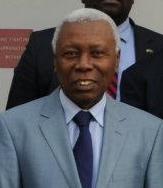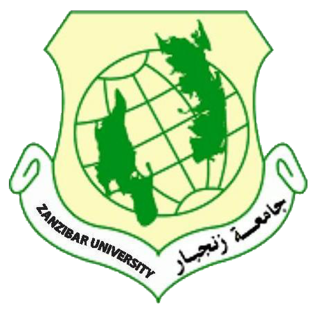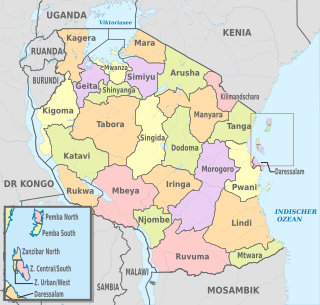
Tanzania, officially the United Republic of Tanzania, is a country in East Africa within the African Great Lakes region. It borders Uganda to the north; Kenya to the northeast; the Indian Ocean to the east; Mozambique and Malawi to the south; Zambia to the southwest; and Rwanda, Burundi, and the Democratic Republic of the Congo to the west. Mount Kilimanjaro, Africa's highest mountain, is in northeastern Tanzania. According to the 2022 national census, Tanzania has a population of nearly 62 million, making it the most populous country located entirely south of the equator.
The modern-day African Great Lakes state of Tanzania dates formally from 1964, when it was formed out of the union of the much larger mainland territory of Tanganyika and the coastal archipelago of Zanzibar. The former was a colony and part of German East Africa from the 1880s to 1919’s when, under the League of Nations, it became a British mandate. It served as a British military outpost during World War II, providing financial help, munitions, and soldiers. In 1947, Tanganyika became a United Nations Trust Territory under British administration, a status it kept until its independence in 1961. The island of Zanzibar thrived as a trading hub, successively controlled by the Portuguese, the Sultanate of Oman, and then as a British protectorate by the end of the nineteenth century.
The politics of Tanzania takes place in a framework of a unitary presidential democratic republic, whereby the President of Tanzania is both head of state and head of government, and of a multi-party system. Executive power is exercised by the government. Legislative power is vested in both the government and parliament. The party system is dominated by the Chama Cha Mapinduzi. The Judiciary is independent of the executive and the legislature.

Zanzibar is an insular semi-autonomous province which united with Tanganyika in 1964 to form the United Republic of Tanzania. It is an archipelago in the Indian Ocean, 25–50 km (16–31 mi) off the coast of the African mainland, and consists of many small islands and two large ones: Unguja and Pemba Island. The capital is Zanzibar City, located on the island of Unguja. Its historic centre, Stone Town, is a World Heritage Site.

Abeid Amani Karume was the first President of Zanzibar. He obtained this title as a result of a revolution which led to the deposing of Sir Jamshid bin Abdullah, the last reigning Sultan of Zanzibar, in January 1964. Three months later, the United Republic of Tanzania was founded, and Karume became the first Vice President of the United Republic with Julius Nyerere of Tanganyika as president of the new country. He was the father of Zanzibar's former president, Amani Abeid Karume.

The president of Zanzibar is the head of the Revolutionary Government of Zanzibar, which is a semi-autonomous government within Tanzania. The current president is Hussein Mwinyi. The president is also the chairman of the Revolutionary Council, whose members are appointed by the president, and some of which must be selected from the House of Representatives.

Seif Sharif Hamad was a Tanzanian politician who served as the First Vice President of Zanzibar and as Party Chairman of ACT Wazalendo.

Mohamed Gharib Bilal is a Tanzanian politician who was Chief Minister of Zanzibar from 1995 to 2000. He was Vice President of Tanzania from 2010 to 2015. He is a nuclear scientist by profession and also served as Permanent Secretary at the Ministry of Science, Technology and Higher Education from 1990 to 1995.

The National Assembly of Tanzania and the President of Tanzania of the United Republic make up the Parliament of Tanzania. The current Speaker of the National Assembly is Tulia Ackson, who presides over a unicameral assembly of 393 members.

The Zanzibar Revolution occurred in January 1964 and led to the overthrow of the Sultan of Zanzibar and his mainly Arab government by the island's majority Black African population.
John Gideon Okello was a Ugandan revolutionary and the leader of the Zanzibar Revolution in 1964. This revolution overthrew Sultan Jamshid bin Abdullah and led to the proclamation of Zanzibar as a republic.
Aboud Jumbe Mwinyi was the second President of Zanzibar, serving from 1972 to 1984. He held several other positions, including Chairman of the Zanzibar Revolutionary Council, Vice-President of the Union of Tanzania, and the vice-chairman of the Chama Cha Mapinduzi (CCM) party.
The Revolutionary Government of Zanzibar is a semi-autonomous government within Tanzania for Zanzibar, which consists of the northern part of the Zanzibar Archipelago, mainly the islands of Unguja and Pemba.

Zanzibar University is a private university in Zanzibar, Tanzania. It opened in 1998 as the first university in Zanzibar, is a private university sponsored by the Darul Iman Charitable Association, an Islamic religious organization in Ontario, Canada. It is situated at Tunguu area, in the Central District, some 12 miles (19 km) from Zanzibar Town. The university campus, with a total area of 170 acres (0.69 km2) of land, is located among quiet countryside surroundings overlooking the Indian Ocean. There is public transport to the university.

The administrative divisions of Tanzania are controlled by Part I, Article 2.2 of the Constitution of Tanzania. Tanzania is divided into thirty-one regions. Each region is subdivided into districts. The districts are sub-divided into divisions and further into local wards. Wards are further subdivided for management purposes: for urban wards into streets and for rural wards into villages. The villages may be further subdivided into hamlets.

The People's Republic of Zanzibar was a short-lived African state founded in 1964, consisting of the islands of the Zanzibar Archipelago. It existed for less than a year before it merged with Tanganyika to create the United Republic of Tanganyika and Zanzibar, which would be renamed to Tanzania in October of that year.
The Articles of Union of Tanganyika and Zanzibar of 1964 is the main foundation of the Constitutions of the United Republic of Tanzania of 1977 and the Zanzibar Revolutionary Government of 1984. The Articles of the Union were signed on April 22, 1964, by the Founders of the Union, Julius Nyerere and Abeid Amani Karume and agreed in 11 matters which later increased to over 22 and are the source of tension and dispute between mainland Tanzania mainland and Zanzibar. See Uamsho movement. The original Articles of Union which contain both Signatures from Nyerere and Karume are yet to be found.

The Judiciary of Tanzania is the system of courts that interprets and applies the law in Tanzania. The current judiciary bases its foundation to the constitution of the United Republic of Tanzania of 1977. Under the Constitution of Tanzania, Justices and Magistrates are independent of the government and subject only to the Constitution and the law. The country has a dual juristition system where there is a judicial structure responsible for Tanzania Mainland and another for Zanzibar. The Court of Appeal of the United Republic was established in 1979 as the final appellate judicial body with jurisdiction over the entire union.
Freedom of religion in Tanzania refers to the extent to which people in Tanzania are freely able to practice their religious beliefs, taking into account both government policies and societal attitudes toward religious groups.
East Germany–Zanzibar relations concerned historical foreign and bilateral relations between the German Democratic Republic and the People's Republic of Zanzibar, both of which are now former states. During the short existence of Zanzibar as an independent state, which emerged in the wake of the 1964 Zanzibar Revolution, East Germany was a key ally of the fledgling island state. East Germany initiated a number of assistance programs to Zanzibar, and established its first embassy in Africa on Zanzibar. Once Zanzibar entered into a union with Tanganyika, the issue of relations with East Germany became politically complex.











